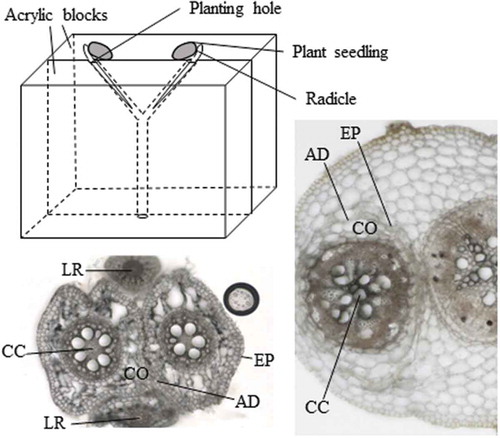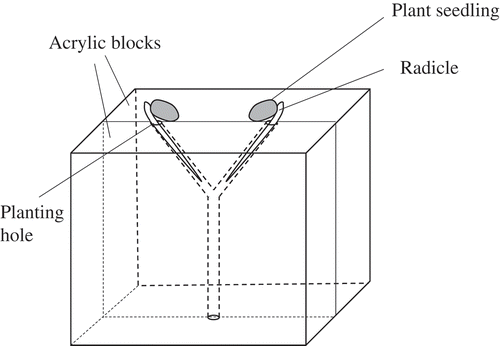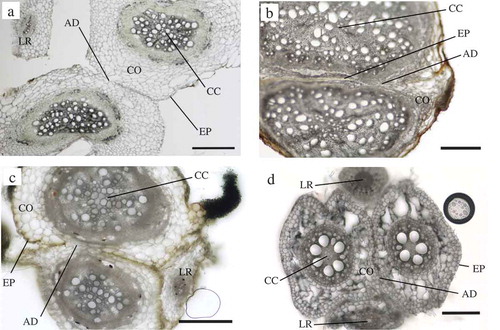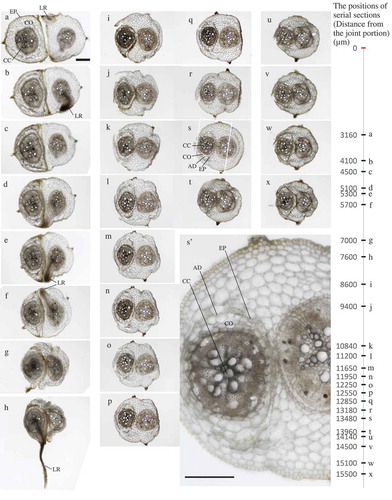Figures & data

Figure 1. Schematic diagram of the natural root-grafting chamber without any surgical operation. A Y-shape rooting passage was made on the contact surface of two transparent acrylic blocks. Radicles were inserted to the planting hole to direct the roots to grow along the rooting channel. The seeds and/or lower parts of the coleoptile were fixed on the top of an acrylic panel by a masking tape. At sampling, the two blocks were separated, and roots were easily removed from the rooting passage. Height, length, width, and planting hole diameter of the chamber are 60mm, 40mm, 30mm and 4mm, respectively.

Table 1. Success rates of natural root grafting without surgical operation using the experimental chamber designed (). The criteria for epidermis adhesion and cortex fusion are explained in the text.
Figure 2. Transverse sections of grafted roots without surgical operation of two different plants of a same annual crop species using the experimental chamber (). The disappearance of the epidermal layer and the adhesion of the root cortex cells are visible. a, Pea; b, Soybean; c, Mung bean; d, Maize. Bars = 200 μm. EP:Epidermis, CO:Cortex, CC:Central cylinder, LR:Lateral root, AD:Adhesion.

Figure 3. The invagination phenomenon of cowpea roots into mung bean roots by root grafting without surgical operation. Left, Cowpea; Right, Mung bean. a-x; Serial section from the joint portion of the Y-shape rooting passage in the experimental chamber (3160–15,700 μm). The positions of serial sections are shown in the vertical scale bar. s’ shows a partially expanded image of s. In s’, the horizontal bar represents 200 μm. EP:Epidermis, CO:Cortex, CC:Central cylinder, LR:Lateral root, AD:Adhesion.
